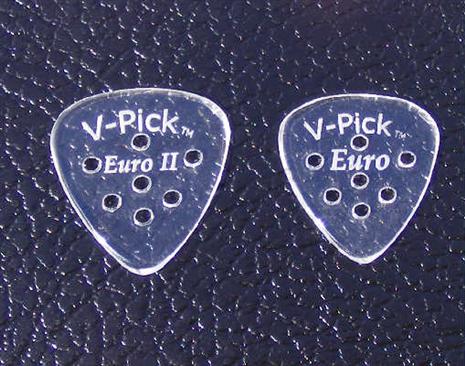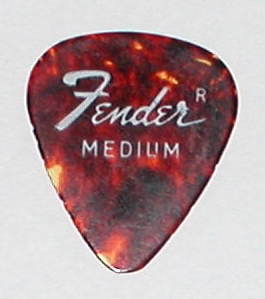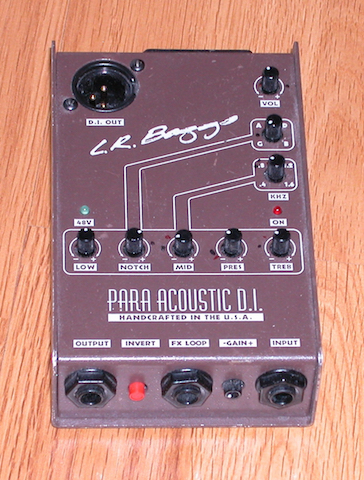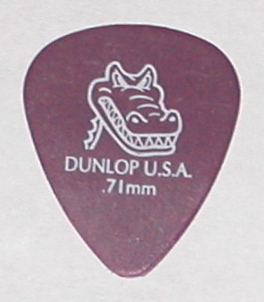We are going to switch gears here and talk about a D.I. box I use quite frequently when routing acoustic guitar tones to the P.A. The L.R. Baggs Para Acoustic D.I. (D.I. stands for direct injection). What led me to this D.I. box was that I had purchased a Godin Solidac guitar. I have the older version of the Solidac with a creme colored pickguard. This guitar is a dual voiced electric guitar with one output for the magnetic pickups and one for the piezo pickups in the Strat style bridge, which was also made by L.R. Baggs. The guitar has a built-in preamp for the piezo bridge pickups, but it didn’t have any control over EQ, and I didn’t like the tone I was getting. I went to a music store with the Godin Solidac in hand, and demoed several acoustic D.I. devices. I decided that the L.R. Baggs Para Acoustic D.I. gave me the best control over my acoustic/electric tones. The price I paid for the unit at the time was $150.00 plus tax. It was more than I wanted to spend, but in retrospect it was money well spent.
FEATURES:
- Adjustable gain for both passive and active pickups
- 5 band EQ with tunable notch and midrange bands
- Phase inversion for best sound and feedback control
- XLR and 1/4″ outputs
- Works with 9V battery or 48V phantom power
Let’s talk about the controls and features of the Para Acoustic D.I. It has an input and two outputs. One output is a 1/4 inch unbalanced output the other is called D.I. out and is a balanced, low impedance microphone cable type output that supports 48 volt phantom power for powering the unit instead of the 9 volt battery, which I try use instead of the battery whenever I can. The D.I. out can go directly to a snake or soundboard without introducing any appreciable noise or signal loss.
There is a gain control for adjusting for pickup sensitivity between various acoustic/electric pickup systems (the PDF manual available from the L.R. Baggs web site explains how to use the gain control in detail with diagrams).
The Para Acoustic D.I. has has a TRS style effects loop where you can plug in a stereo Y-cable into the jack with two mono plugs to split out the send and return of the effects loop. The tip of the stereo plug is the “send” and goes to the input of your outboard effect. The ring is the “return” and connects to the output of your effect. The sleeve is the ground. The send taps the signal right after the input gain control, so it bypasses all of the E.Q. and volume controls of the device. The manual for the device says that the effects send can be used for pristine unbalanced output from the discrete class A circuitry used in the preamp. I personally have not used the effects loop, so I cannot vouch for how well it works.
Next is the invert switch which controls the polarity/phase of the signal. When the switch is out the signal is in phase. When the switch is pushed in it is out of phase with the P.A. loudspeakers which can help with defeating low end feedback.
Moving on to the E.Q. section of the pedal. This section is quite powerful and is what sold me on purchasing this D.I. box. There are five basic controls in the E.Q. section; Low, Notch, Mid, Presence, and Treble. These controls start at “0” in the middle of the sweep, turn left to cut and right to boost the signal for each control. There are also two specialty controls for the Notch and Mid controls. For the Notch control there is a Tune control that sweeps over the A, D, G, and B notes to notch out a certain feedback frequency or to accent a certain frequency in a positive way. The Mid control has a frequency control that sweeps from .4kHz to 1.6kHz.
We will now look at each E.Q. control individually.
Low: Affects the signal in the 85Hz range. I turn this way down to cut the mud and boominess from my acoustic guitar plugged in sound.
Notch and Tune Knob: This control affects the 98 – 247Hz range. This control was designed to help specifically with feedback problems. You can find the frequency where your guitar is feeding back, and cut that frequency until the feedback goes away. I find in my playing situations that I don’t have a lot of feedback issues, so I use this control to add body to my signal, which works quite well.
Mid and Frequency Tune Knob: Is the midrange control, which controls the 400Hz – 1.6kHz range. Here you can sweep through the frequency range with the frequency tune knob, and boost or cut the frequency to match your sound requirements for the particular instrument you are using at the time.
Pres: This is a presence control. This operates in the 5kHz frequency, and this control is used to add or remove sizzle from your sound. I usually keep this control set fairly low. I don’t like too much sizzle in my sound.
Treb: Is the treble control functioning in the 10kHz frequency. You can boost or cut your treble response here. I like a rounder, warmer acoustic sound, so I set this control rather low for the guitars that I own. This control can go quite bright if you like a brighter, sharper sound.
Vol: This is not part of E.Q. section but controls the overall volume of the signal that leaves the box through the output. I set this control on the “0”, which is high Noon on the dial or to about + 3/4 or 3:00 PM on the dial depending on the guitar I am using.
As I mentioned earlier this D.I. box has two ways to power the device. You can use either a 9 volt battery or 48 volt phantom power from the soundboard if you are connected to the D.I. Out with a microphone cable. The unit switches on when a cable is inserted into the Input jack (if you leave a cable plugged into the input of this box for a prolonged period of time your battery will run down to nothing). I prefer to use the phantom power whenever I can to save on batteries. It is a good idea to always have a battery in the Para Acoustic D.I., however, in case the 48 volt phantom power is disconnected or turned off, the power will automatically switch over to the 9 volt battery and keep the D.I. working without skipping a beat in a live performance situation.
The case that houses the circuitry is a nice, heavy folded metal case. I have carried this unit around with me for years and have not had any reliability issues at all.
I hope you found this review to be helpful. If you have any questions or comments please leave them in comments section.
Like this:
Like Loading...







